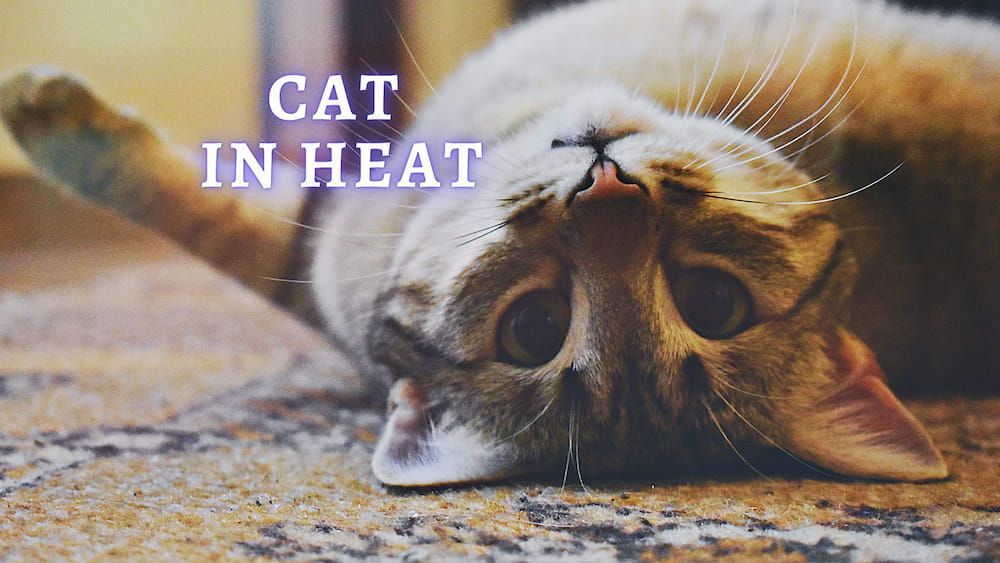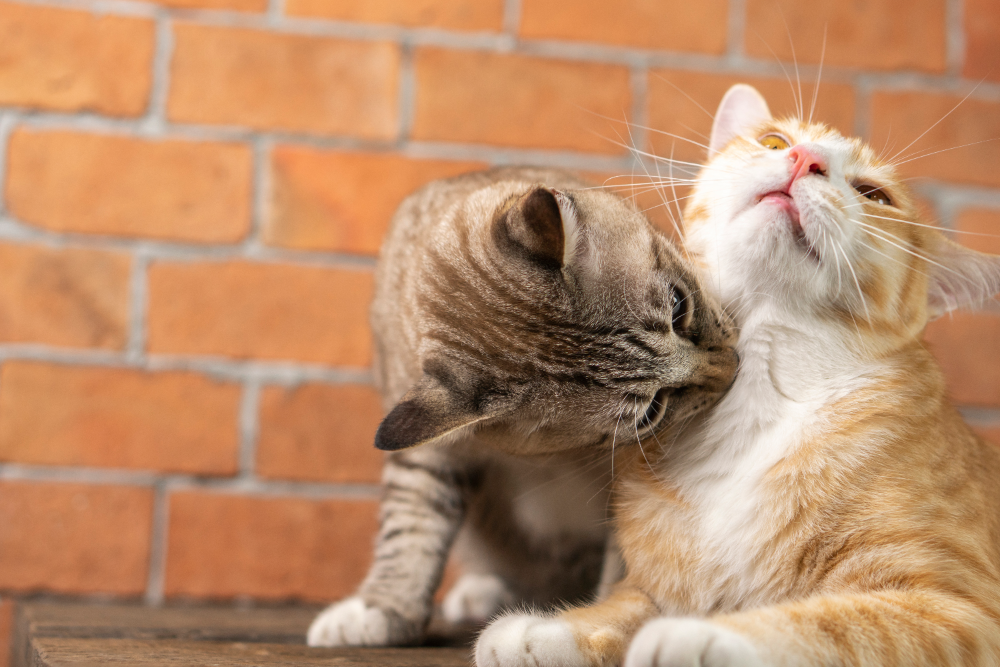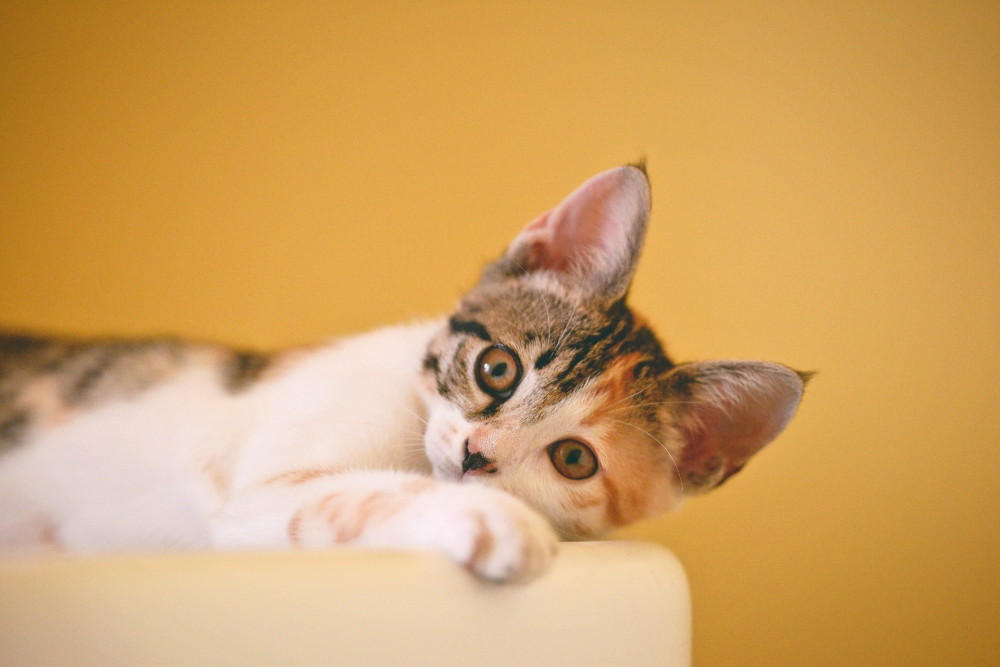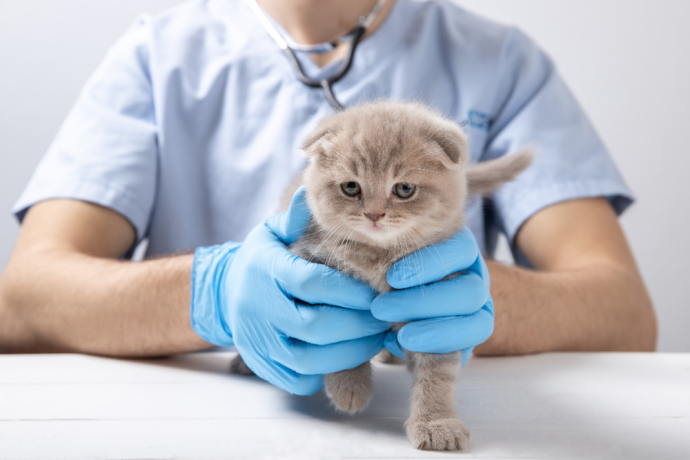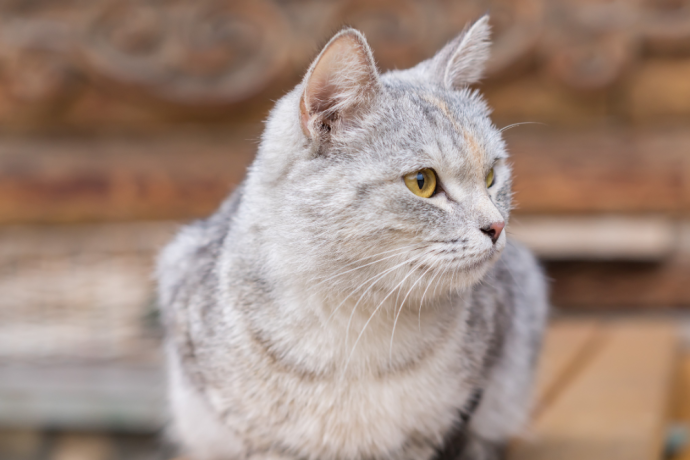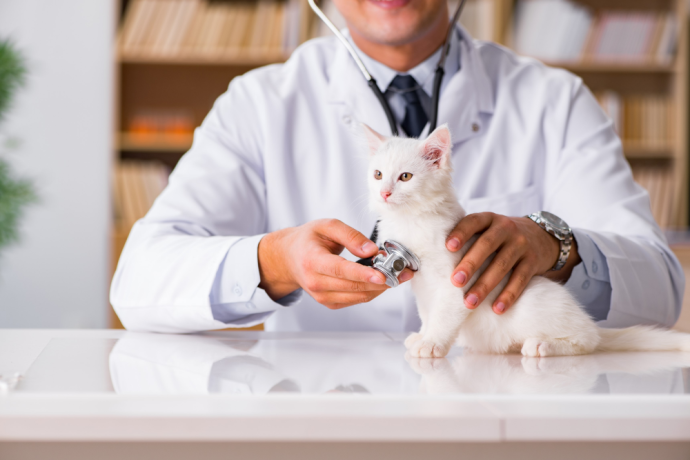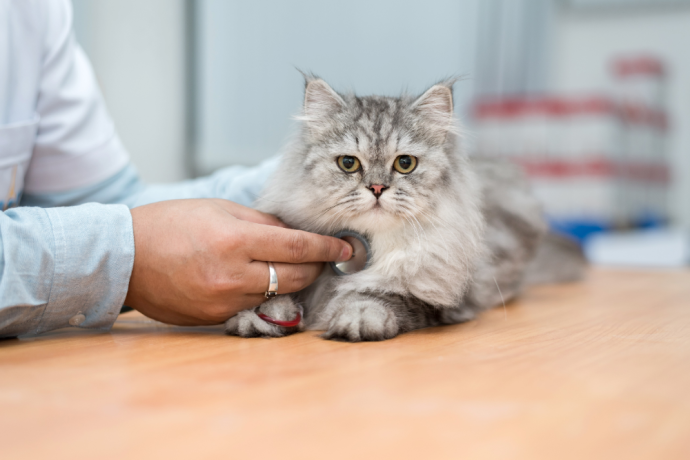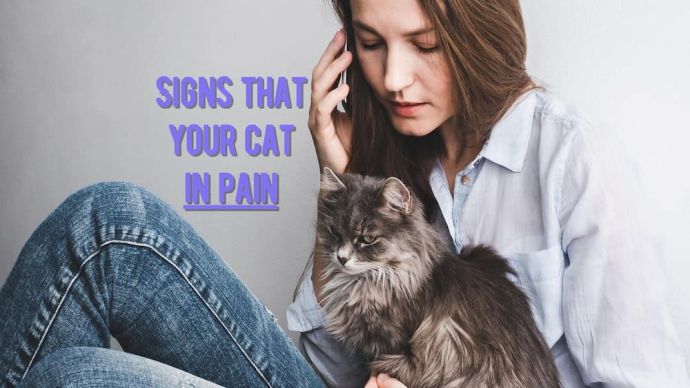Cat is in Heat: How to help a Cat in Heat?
Written by:
Author: Dr. Edele Grey
Dr. Edele Grey is a veterinary surgeon with seven years of experience. She professionally works mostly with horses but has treated pets of all sizes including terrapins, llamas, and others. Dr. Grey graduated with honors from the University College Dublin, Ireland, has completed further education in Equine Sports Medicine. In her free time, she enjoys writing about pet ownership and educating people about veterinary care of animals and preventing disease.
View all 10 articlesLearn about our editorial process and veterinary review board.
Viewed: 1250
Updated on: 05/17/2023
Your kitten is overly affectionate the past few days but won’t stop yowling like a banshee at 2 am?! If your kitty hasn’t been neutered, then she may be reaching sexual maturity and entering estrus.[1] Estrus is more commonly known as a ‘heat’. These periods signal that your female kitten is sexually mature and fertile. Kittens reach puberty around four to six months of age though this could be as late as 12 months in some, due to age and the time of the year. A kitten can become pregnant during their first heat cycle, so if you don’t want her to breed, you need to take some extra care to prevent matings.
Cat’s are seasonally polyestrous, meaning that queens will have multiple, regular heat cycles during the Spring and Autumn months in which they are not mated or pregnant. Some cats will cycle through heats all year round if they are indoor cats or live in warmer climates.
What is causing my cat to be in heat?
Heat, also known as estrus, occurs due to hormonal changes that signify your kitty is fertile. As cats have frequent cycles when not pregnant, these ‘heat’ period s may become monthly events if your pet isn’t neutered.
When do cats go into heat?
Kittens typically enter their first heat cycle between 4 and 6 months old, though this can be much later if it’s winter or live in cooler climates.
How often do cats go into heat?
While the stereotype for a cat is to come into heat every three weeks, this can vary. Some queens may return to heat within just 1 week, while others may not show signs of being in heat for up to 6 weeks following their last estrus. Following a pregnancy, cats may cycle within just a few weeks. A female cat may become pregnant during this estrus cycle.
How do I know when my Cat is in the Heat?
Typical behavior signs of a cat being in heat include being overly affectionate and rubbing her face on furniture to scent her territory and increasing and prolonged vocalization while demanding your attention. Some cats may be irritable or aggressive toward their human slaves during a heat cycle due to hormones’ cacophony and her frustration if unable to mate. Almost all queens in heat will roll on the floor while wiggling their bottom in the air in a mating position, particularly when stroked. Some cats will spray urine around the home and continuously beg to go outdoors to attract males. You May even see some male cats hanging around your garden when your female cat is in heat.
The mewing and yowling are to let other cat’s that they are sexually fertile and looking for a male to mate. The hormonal surges your kitten is experiencing influence their scent spreading (face rubbing and urine spraying) and attention-seeking behaviors which will subside once the heat is over. Unlike dogs, we rarely see any blood spotting when queens are in heat.
What to watch out for:
- Behavioral changes such as being overtly affectionate or irritable.
- Scenting, including spraying urine.
- Increased mewing and yowling.
- Wiggling her bum in the air towards you in a mating position.
How long does a Cat stay in Heat?
Estrus usually lasts for an average of 6 days in cats, though this can vary from a few days to weeks. The duration of your cat’s heat depends on a few things; cat’s in their first heat may have prolonged or very short heat due to their developing reproductive organs and hormone production.
Mating will also affect how long your queen remains in heat. Cat’s are known as induced ovulators, which means that a queen must be mated to release eggs for fertilization. Most females require 3-4 matings within 24 hours to induce this release and become pregnant. Once the queen has ovulated, her heart will stop within 1-2 days. If a female hasn’t been mated in a heat cycle, she will return to heat again around three weeks later though their cycle can last from as little as 1 to 6 weeks throughout the season. [2]
READ MORE: How to tell if Cat has Ear Infection
How can I help my cat when she’s in Heat?
Estrus can be a stressful time for your queen, mainly if she cannot find a male. The desire for mating is primal during this time. However, unwanted matings are prevented by their human companions to reduce the massive overpopulation of stray cats and unloved kittens in an area that can be incredibly frustrating for your kitty. Encouraging hunting behavior with games and her favorite toys can help take her mind off the urge to breed. Your queen at this time will also be a feline Houdini to be with her potential mate; secure windows, pet doors, screens, and any escape routes to avoid unintended matings or other dangers of being outdoors (depending on the area in which you live with regards to traffic and predators).
Suppose your cat is in heat and is being extraordinarily demanding for affection. In that case, you can pamper your queen with lots of attention, stroking and grooming if she enjoys brushing (even if she usually hates being brushed, you may find she enjoys it during her heats). If your cat is on the opposite end of the spectrum and very irritable, if you provide a quiet space out of the way from the home’s general traffic, she may prefer the peace while watching what’s going on.
When in estrus, cats in heat will have a strong urge to mark her territory to attract a mate (as hormones heralding her fertility will be in her urine) which may lead her to spray urine, sometimes in the most inappropriate of locations in your home. Keeping your queen’s litter box clean with no scent of urine will encourage her to continue marking the box rather than your curtains or walls. When cleaning you should avoid cleansers containing ammonia as these may actually exacerbate the urine spraying behavior in an area.
Some studies have shown that cats love soothing music which is worth a try when your kitty is in heat. Worst case scenario is she feels the need to serenade you while you play some smooth jazz! Herbal remedies or synthetic pheromone sprays or diffusers may help to calm your cat though these should be used in moderation and their effect varies widely depending on the cat. Some cats are calmed by catnip, if this is the case you can try it out occasionally to help ease her stress levels.
Top tips to help your kitty in the heat:
- Increasing playtime and encouraging hunting games.
- Pampering your queen with affection and grooming.
- Providing a quiet resting place to allow your kitty to escape the bustle of the home if desired.
- Rigorous cleaning of the litter box.
- Play soothing music.
- Pheromone sprays or calming diffusers can help your queen relax.
How to stop your Cat from being in heat?
Neutering is the best way to prevent your cat from continuing with heat cycles, which helps prevent unwanted litters of kittens, the spread of sexual diseases among cats, and helping your eardrums when your kitty’s stressed in estrus. You can neuter your cat at any stage from 4 months (some shelters may spay at 12 weeks to ensure the kitten doesn’t enter puberty and become pregnant before fixing in their new home).
If you don’t ever plan on breeding your queen, then having her spayed will avoid many problems down the road, including health problems such as uterine infections (pyometra).
Can I spay my cat while she is in the heat?
While it’s possible to spay your kitty while she is in heat, your veterinarian may advise against this in some instances. When a cat is in heat, there is an increase in blood flow to her uterus and ovaries. This can cause an increase in bleeding during surgery or prolong the length of time the procedure takes. You should discuss this with your veterinarian if you’re considering having your queen neutered while she is in heat.
READ MORE: Do Spayed Cats go into Heat
How can I keep my cat calm while in the heat?
Calming your kitty while she is in heat can seem a daunting task. There’s no foolproof method that works for every cat. Calming sprays or diffusers may help to soothe some queens. If you’ve never tried one with your kitty before, its best to spray some on a blanket or bedding and watch how she reacts. Giving your cat a “hiding spot” where she isn’t disturbed or can escape other pets and small humans in the home will also help.
FAQ
At what age do cats go into heat?
Kittens typically enter their first heat between four to six months of age. Remember, there is a risk of your cat becoming pregnant on her first heat cycle. To avoid unwanted pregnancy, you should keep your cat away from intact male cats.
How do you stop a cat in heat from meowing?
There’s no guaranteed way to stop your queen from meowing or yowling while in season. You can try some of the calming tips above to reduce her stress levels.
Are there natural remedies to calm down my cat when she is in the heat?
There are lots of products available aimed at calming stressed kitties. No single product works for all cats, so you may have to test out a few before finding one that works for your queen while she is in heat.
Is my Cat in Pain when she’s in Heat?
The truthful answer to this is we don’t know. Unfortunately, our kitties can’t tell us when they hurt, but we can imagine that from their strange behaviors and the loud yowling in the middle of the night that something is going on. These behaviors can be explained as calling to find a potential suitor or signaling that they are sexually available to local Tomcats. Queen’s don’t show any other signs of pain, so pain relief wouldn’t be indicated for your pet. If your queen becomes dull or you’re concerned about her showing abnormal or pain-related behaviors, then you should contact your local veterinarian’s office for advice to ensure nothing untoward has happened (such as a uterine infection).
Finally…
When your female cat is in season, you need to be patient with her. This is a frustrating time, particularly if she is unable to mate and this isn’t something she chose to have happened to her. Estrus is an entirely primal and hormonal phenomenon, and we need to remember that your cat will act instinctively, not thinking about the fact that you need to be at work at 8 am while she’s calling for a tomcat at 3 am. It will help you both if you give her some extra snuggles and attention while she’s going through this, and lots of play will also help to tire her out a little to encourage some more sleep at night. The added benefit of this is that you will develop a stronger bond between you both.
READ MORE: Why does my Cat attack my Legs
Article Sources:
- Llera, Ryan. “Estrous Cycles in Cats.” VCA Hospitals, vcahospitals.com/know-your-pet/estrus-cycles-in-cats.
- Mackie, Marvin M. “Reproductive Cycle of Cats May Surprise You.” Veterinary Partner, veterinarypartner.vin.com/default.aspx?pid=19239&catId=102902&id=6656707.
 Cat Veterinary Tips Cat Chewing Cardboard: Why Does My Cat Chew On Cardboard? Vet Advice
Cat Veterinary Tips Cat Chewing Cardboard: Why Does My Cat Chew On Cardboard? Vet Advice - 4382
- 0
 Cat Veterinary Tips My Cat Lost its Voice: Can Cats get Laryngitis? (Vet Advice)
Cat Veterinary Tips My Cat Lost its Voice: Can Cats get Laryngitis? (Vet Advice) - 23554
- 13
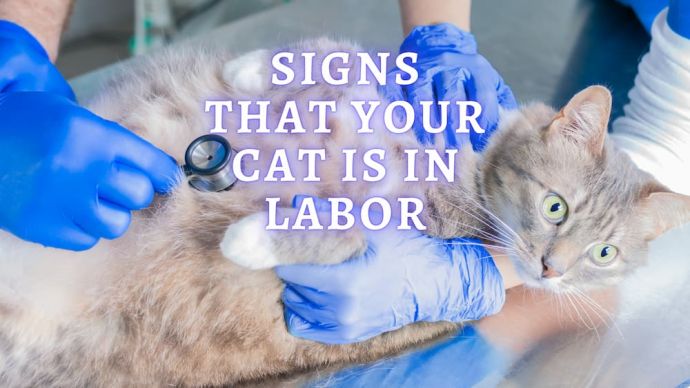 Cat Veterinary Tips Signs That Your Cat is in Labor: How to tell if a Cat is Pregnant?
Cat Veterinary Tips Signs That Your Cat is in Labor: How to tell if a Cat is Pregnant? - 15122
- 1
 Cat Care Why Does My Cat Attack My Legs? 10 Reasons Why and What To Do About It (Vet-Approved Advice)
Cat Care Why Does My Cat Attack My Legs? 10 Reasons Why and What To Do About It (Vet-Approved Advice) - 46013
- 21
 Cat Veterinary Tips Cat Stomach Gurgling: Vet Advice on Why is Your Cat Stomach Gurgling?
Cat Veterinary Tips Cat Stomach Gurgling: Vet Advice on Why is Your Cat Stomach Gurgling? - 36469
- 4
 Cat Veterinary Tips My Cat Lost its Voice: Can Cats get Laryngitis? (Vet Advice)
Cat Veterinary Tips My Cat Lost its Voice: Can Cats get Laryngitis? (Vet Advice) - 23554
- 13









